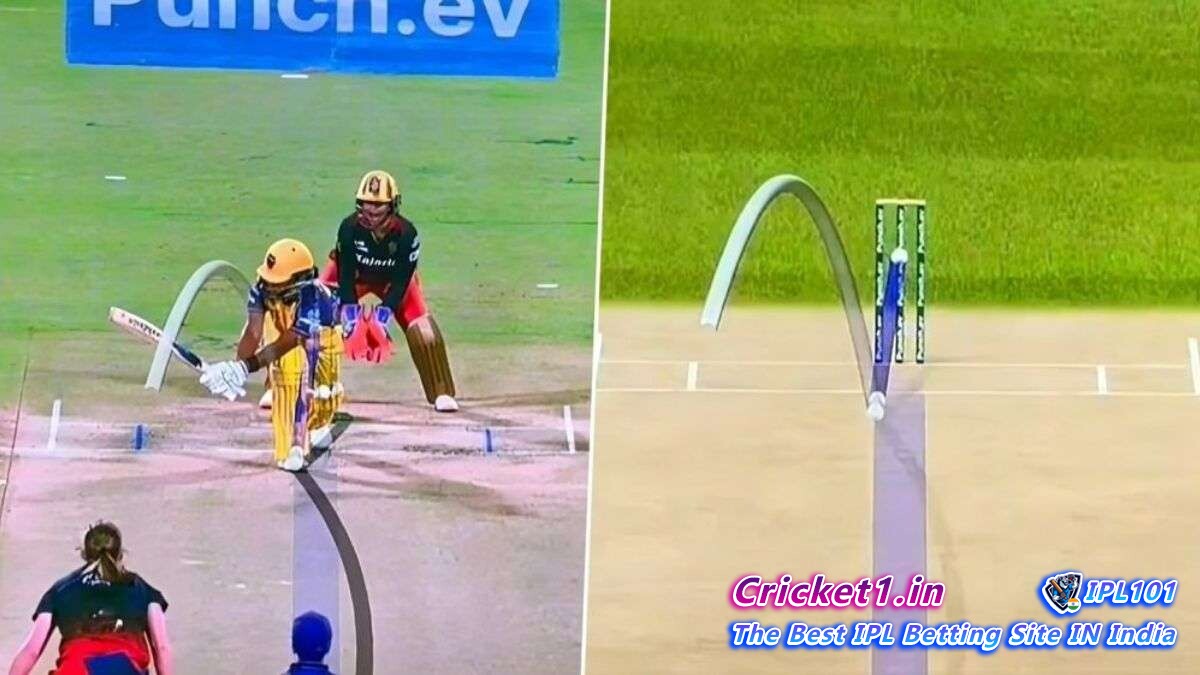
The gripping cricket action in the Women’s Premier League (WPL) continued to enthrall fans with vibrant matches taking place across the bustling cities of Bengaluru and Delhi. As this year’s Bengaluru leg of the competition drew to a close on March 4th, an uproar ensued during a matchup between the league’s aggressive contenders, Royal Challengers Bangalore (RCB) and UP Warriorz (UP). At the center of attention was a controversial dismissal involving Chamari Athapaththu, under scrutiny due to the Decision Review System (DRS).
During the vital seventh over of the innings, the contention surfaced as UP Warriorz were navigating their chase assertively. Athapaththu, the determined batter at the crease, endeavored for a powerful sweep shot facing Georgia Wareham’s delivery. Unfortunately, she missed, and the ball struck her pads. An immediate appeal for leg-before-wicket (lbw) followed, but umpire Vrinda Rathi was unconvinced and dismissed the claim. However, RCB’s captain, Smriti Mandhana, was not satisfied and escalated the matter to the DRS.
To onlookers around the stadium and viewers at home, the trajectory of the ball appeared to be veering away from stumps after pitching on the leg side—suggesting a likely survival for the batter. The atmosphere bristled with tension as the replay was underway. Contrary to the visual expectations, the ball-tracking technology depicted an unexpected curve, affirming the ball would impact the middle stump, leaving the umpire no choice but to retract her initial decision. This turnaround brought a wave of exuberance among RCB players and fans alike.
However, a contrasting scene of disbelief was evident on the faces of UP Warriorz’s captain Alyssa Healy and Chamari Athapaththu. Healy could be seen at the non-striker’s end, scarcely concealing her bewilderment and uttering in dismay to the umpire, “No way.” The discontent spread to the team’s dugout where John Lewis, the UP Warriorz coach, openly expressed dissatisfaction with the use of technology in this crucial junction of the game.
“In real-time, you’d think the ball might just pitch in line, and spinning—you expect it to move like a legspinner’s delivery,” Lewis articulated in the post-match debrief. “To then witness it adjudicated as spinning the opposite, it’s not only perplexing but proved a decisive moment that worked against us,” he added, pointing to the significant influence the decision had on the match’s momentum.
This is not the first time ball tracking has been in the spotlight for questionable projections. A notable example came to light during the recent Test series between India and England when the DRS call on batsman Zak Crawley at Rajkot raised eyebrows. Moreover, during the concurrent edition of the Pakistan Super League (PSL), an unmistakable misjudgment in determining the point of impact in Rilee Rossouw’s dismissal led Hawk-Eye to issue an official apology to the Pakistan Cricket Board (PCB) after admitting an error.
These incidents have reinforced the ongoing debate about the infallibility of technology in the sport. Critics and fans alike are calling for consistent accuracy in technological tools like DRS that are now integral to the game’s decision-making process. As the Women’s Premier League moves forward, one thing is clear: technology will remain an indispensable, albeit occasionally controversial, participant in the realm of cricket.

